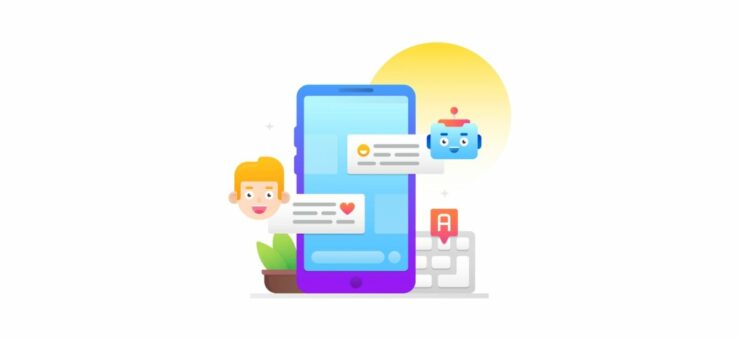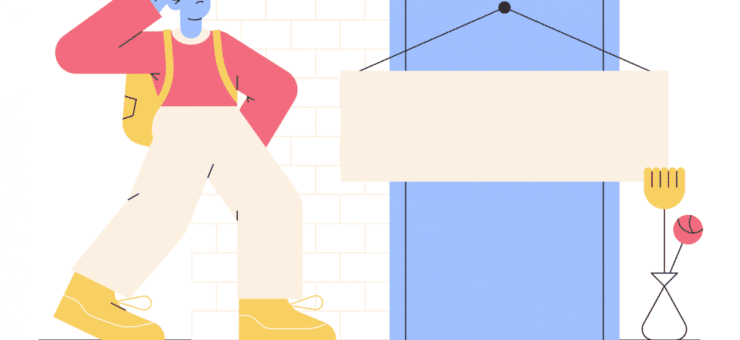Review the set of important aspects of creating an effective and usable app icon for a mobile application.
A perfect mobile app comprises many things—great user interface and user experience, fluid animations, quality sound effects, etc. However, the first thing that a user notices in the app store and after installing your app is the app icon. Let’s take a look at how you can create a functional and beautiful design for it.
What’s an App Icon?
An app icon is a visual anchor of your product. It represents what your product is all about and also shapes its brand. However, an app icon shouldn’t be mistaken with a logo. Logos are scalable vector designs that can be used as a brand symbol in websites, newsletters, billboards, brochures, etc. while an app icon is used in a set size and format, mainly on mobile.
Designing mobile app icons requires a different approach than other common graphic assets. So, there are things you need to know when you create an icon-based logo, whether you’ll choose to use the help of a graphic designer, or do it yourself with the vector software like Adobe Illustrator or Lunacy, or with the help of an online tool such as Tailor Brands.
If you want to create the perfect icon for your mobile app, consider the following 5 aspects.
1. Recognizability
Brand recognition is what makes mobile users identify some apps more easily than others. The more familiar people get with your brand, the quicker they’ll be able to pick your app out of a crowd.
Why does this matter? Well, think that an average mobile user has at least 35 apps on their smartphone. Many people have dozens of mobile apps for various purposes like gaming, productivity, news, etc. So, if you want them to find and use your app more often, then you have to make it easy to recognize. The following are some of the things you can do with your app icon for that:
- Keep the design simple.
- Study other popular apps to learn how they stand out from the rest (but don’t copy!)
- Choose an icon that’s unique, so it won’t blend in with the others on users’ screens.
- Use a color combination that pops. Contrast is a good way to go, such as black and white, navy and yellow, etc.
2. Scalability
While it’s not as versatile as a logo, your mobile app icon will be used in various places and devices. For instance, a mobile with a small screen will use small mobile app icons while a tablet—which typically has a large display—will use large icons. So, it’s important that your app icon is scalable. Here’s what you need to know to make that happen:
- Focus on a particular, simple shape, so that the quality is preserved when the icon is scaled.
- Don’t work on a 1024 X 1024-pixel canvas. Also, check the design on multiple devices with different screen sizes before you commit to it.
- Android recommends your starting app size to be 864×864 pixels because it will make it easier to tweak the design if need be. However, the majority of devices will use 36×36, 48×48, 72×72, or 96×96 pixels. (Note that Android app icons must be saved as PNG files, not JPEG).
- Unlike Android, iOS will resize your icons for you per device; just make sure your starting size is 1024×1024 pixels, and they’ll take care of the rest. However, like Android, they require you to save your design as a PNG file.
Is there a device we missed? Check out this list of recommended sizes and make sure you can resize your app icon to fit all of your mobile needs.
3. Originality
There are over 2.56 million apps on the Google Play app store today, and the majority of these apps have custom icons. So, what does that tell you? Your app needs to look unique, and it’s a real challenge now. Since the icon is the first thing mobile users will see when browsing apps, it’s your responsibility to give your app icon the “wow” factor that can make it attractive. Here are some things you can do:
Learn from your competitors. See what kind of app icons they have, note which design elements work, and then use those aspects to take your design in a different direction.
Anticipate your users’ expectations, then deliver. Your app icon is making a promise to them about what they will see once they start using it, depending on its look and feel. So, even though you’re creating an original look, make sure that the icon matches the design of the app itself, so as not to throw off your users.
Experiment with different colors and compositions. Think about your target audience, the people who will be downloading, using, and enjoying your app. What kinds of colors will appeal to them? For example, young gamers might gravitate toward darker, dramatic palettes, while gardeners could gravitate toward softer, natural colors (browns, greens, blues, etc.).
4. Minimalism
One of the simple tips to improve your app icon design is minimalism. What this means is that you don’t have to—and shouldn’t—go overboard with the design, as that can create visual noise. Icons are best left simple, understated, and easy to understand at a glance—which is best achieved by a minimalist design. So, keep the following in mind:
- Avoid using non-essential words in the icon like “Play” or “Tap,” etc.
- Don’t include photographic details, as they are hard to see in icons that are meant to be small.
- Design the icon with a central focal point that instantly garners attention.
5. Consistency
We touched on this above, but it’s worth emphasizing more strongly. Consistency is a must in the way an app icon looks and how the app itself feels when someone uses it. So, make sure that your app icon justifies the experience the app provides. To do that, it’s important to remember the following:
Use the symbolism of the icon to connect with the app’s functionality. Shapes like arrows and spinning wheels indicate motion, which would be great for a racing game; notepads relate to meticulousness, which could symbolize a tracker, etc.
Use a similar design style in the icon and app’s UI. Again, we talked about this before; don’t surprise your viewers with an app that looks totally different from what the icon promised because it’s likely they will bounce and look for something else.
Make sure that all sizes of your icon are the same in look and feel, just scaled down. There’s no point in creating several versions of your app icon because unlike a logo; it’s being used in very specific contexts—i.e., in Play Stores and on users’ mobile screens. No matter what, the design should be consistent across devices so that your users can identify you regardless of the context.
So, there you have it—some important aspects to consider in order to optimize your mobile app logo. Remember to have your target audience in mind, experiment with design elements, keep it simple, and always stay consistent with the design.
About the author: Andrew Smith, a freelance graphic designer who loves writing on topics where business meets design
Check the actual logo design trends, read what’s a brand book and why it’s important, learn the psychology of the logo design process, and review the tips on typography logo designs.


